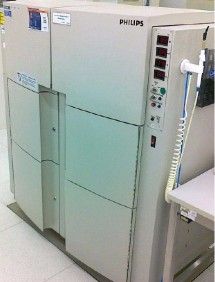Specific Process Knowledge/Characterization/X-Ray Diffractometer: Difference between revisions
No edit summary |
|||
| (4 intermediate revisions by 3 users not shown) | |||
| Line 1: | Line 1: | ||
'''Feedback to this page''': '''[mailto:danchipsupport@danchip.dtu.dk?Subject=Feed%20back%20from%20page%20http://labadviser.danchip.dtu.dk/index.php?title=Specific_Process_Knowledge/Characterization/X-Ray_Diffractometer click here]''' | '''Feedback to this page''': '''[mailto:danchipsupport@danchip.dtu.dk?Subject=Feed%20back%20from%20page%20http://labadviser.danchip.dtu.dk/index.php?title=Specific_Process_Knowledge/Characterization/X-Ray_Diffractometer click here]''' | ||
==X-Ray Diffractometer== | ''Text and photo by staff at DTU Nanolab or DTU Electro (previously DTU Photonics Engineering)'' | ||
==X-Ray Diffractometer <span style="color:Red">This machine has been decommissioned - see other XRD setups at DTU Nanolab [[Specific Process Knowledge/Characterization/XRD| HERE]] </span>== | |||
[[file:X-ray_diffractometer.jpg|300px|right|thumb|X-ray diffractometer]] | [[file:X-ray_diffractometer.jpg|300px|right|thumb|X-ray diffractometer]] | ||
Latest revision as of 10:53, 9 June 2023
Feedback to this page: click here
Text and photo by staff at DTU Nanolab or DTU Electro (previously DTU Photonics Engineering)
X-Ray Diffractometer This machine has been decommissioned - see other XRD setups at DTU Nanolab HERE

The Philips DCD IIH x-ray diffractometer used to characterize the layers on epitaxial semiconductor structures - usually III-V compound semiconductors.
The X-Ray Diffractometer is maintained by DTU fotonik (not Nanolab) and is therefore not in LabManager!
X-ray diffraction is a non-destructive technique to measure the lattice mismatch of epitaxial grown layers. The resulting measurements are also know as rocking-curves. In this way it is possible to get the relative content of e.g. In in GaxIn1-xAs grown on InP. Ga0.47In0.53As is lattice-matched to InP. Compunds containing three different materials are also called ternaries. For more complex compounds containing 4 elements, known as quaternaries, e.g. GaxIn1-xAsyP1-y, it is possible to obtain both x and y by combining x-ray diffraction measurements and PL-measurements (see PL Mapper).
| Performance | Excitation |
|
|---|---|---|
| Detection |
| |
| Sample size |
| |
| Resolution |
| |
| Materials | Allowed substrate materials |
|

